- Home
- Rick Mofina
[Tom Reed and Walt Sydowski 04.0] No Way Back Page 2
[Tom Reed and Walt Sydowski 04.0] No Way Back Read online
Page 2
In the newsroom late one night, after finishing a story about a crack-addicted bodybuilder who threw his ten-month-old daughter against a cement wall, Reed found himself confiding to the Star's religion editor.
“You know what I cover?” Reed said. “I cover evil.”
“Maybe you should change beats.”
“I can’t. I thought about it. I just can’t.”
“Then be careful. Remember Nietzsche’s caution.”
“Yeah, what’s that?”
“Just don’t get too close to your subject, Tom.”
That was several years ago, when the stories grew darker and his drinking grew heavier, exacting a toll on his wife, Ann, and their son, Zach.
He picked up the small framed photograph of the three of them, ran a hand over his face. Ann left him during that time. Took Zach and moved to her mother’s in Berkeley for a few months. He never blamed her. It needed to be done, so he could see what he’d become. And it worked. They reconciled, pulled through, re-built their lives piece by piece. Ann’s children’s clothing stores were prospering. Reed promised to leave daily news reporting within a year, to stay home and write books. But with his drinking in check, his marriage strengthened. So did his reporting and writing. He had some dry spells, he also whacked a few major stories out of the park. When he’d taken a few months off to write a book, Ann never spoke of the promise he’d made until the weekend before his leave of absence ended. They went for a Sunday drive along the coast. They walked along a rise overlooking the Pacific, Ann took his hand, entwined her fingers with his, then chose her words carefully.
“Tom, you haven’t said it, but I feel you’re thinking about not quitting.”
Gulls cried above them as Zach ran ahead.
“Things are good for us now. We’re stronger. Happier,” she said. “The stores are doing well. But I’m afraid.”
“What are you afraid of?”
“That if you don’t get out now, you’ll never leave. And if you don’t leave, you’ll get too close again.”
“Ann—”
“Tom, you immerse yourself into the most horrible stories, until they become a terrible obsession. What you achieve for the newspaper comes at a price, and Zach and I pay it.”
He said nothing.
“And if that happens again, if it turns bad like the other times, Tom, I just can’t go through it. We won’t survive it.”
The roar of the surf and salty sea breezes tumbled over them.
He couldn’t find the words to tell her the truth, that he feared he couldn’t quit. Couldn’t quit something that deep down he believed he was born to do. Something that had chosen him. That despite the bad times, he was convinced there was a greater meaning in it all and he couldn’t stop until he found it.
“It’s your call, Tom.”
He searched the horizon for the right answer.
“This week, Ann. When I get back this week, I’ll tell them I’m finished.”
Reed set the picture down next to his computer screen.
Across the newsroom somebody was shouting about a jewelry store. The police radios blared. Reed ignored them. An editorial assistant hurried by. “Hey, Tom, good to see you, man.”
In the few days since his return, Reed had accepted a stream of “welcome backs” and updates on newsroom gossip, all the while not breathing a word to anyone that he was poised to quit. Three large boxes of unopened mail awaited attention on his desk. He still hadn’t gotten through it all, or his hundreds of e-mails. He hadn’t even had the chance to talk to the Star’s new metro editor, Bob Shepherd. On Reed’s first day back, they’d met for a moment. Shepherd wanted a private meeting, then got tied up.
Reed fished out an outdated newsroom memo on Shepherd’s appointment. He had joined the Star six months after leaving the Washington Post. He’d also been a features editor at the Wall Street Journal and a metro news editor at the New York Daily News. He was a respected first-class legend with twenty-four years in the business. He knew how to break a story and how it should be written. A reporter’s dream. Too bad they wouldn’t get a chance to work together, Reed thought. He was wondering whether he should begin drafting his letter of resignation when his line rang.
“Tom, it’s Bob. Sorry for the delay. Been having a lot of meetings. Got a little time now, if you’re clear.”
“Sure.”
Approaching Shepherd’s office, Reed felt his stomach twist with the final story he was about to break. The end of his newspaper career. As he glanced at the controlled chaos of the newsroom, Reed’s years at the Star blurred by. Shepherd’s door was open, he was waving him in while talking into his phone.
“We’ve got people on it? Have a seat, Tom. Photogs? Good. Keep me posted.” Shepherd hung up, extended his hand to Reed.
“Tom, I’m afraid I’ve only got a few minutes. My apologies. A lot of meetings, but I didn’t want to put ours off again. Welcome back, belatedly. How’d the book go? Crime fiction, was it?”
“Yes. It was good, and, well, it’s fantastic you’re here, Bob, but I think, right off, there’s something I have to tell you.”
“Sure.” The phone rang. “Hang on.” Shepherd took the call.
Reed noticed the framed awards, certificates, pictures of Shepherd holding the Pulitzer Prizes he’d helped his former papers win.
Shepherd ended his call.
“Sorry, Tom. I’m going to have to take off to see the publisher. Look, there are some long-range and immediate ideas I need to kick around with you, now, if I may.”
“Well, I—”
“Some of my recent meetings dealt with this paper’s slipping circulation, loss of readership to the Internet, television, lifestyle, habits, everything. Newspapers breathing their death gasps and what we can do about it.”
“Right.”
“The numbers don’t lie, but I still believe that for the money, newspapers are the best narrative vehicle for reflecting the daily meaning of contemporary life. I know you believe it, because I saw it in your stuff, and the work of some Star staffers when I was at the Post. I believe there’s untapped potential to produce outstanding work on a regular basis here.”
“Really?”
“It’s part of the reason I sought this job. My wife and I have family here, but a few months after I left the Post, I realized I wasn’t ready to walk away from this business. I think people like you are its hope for the future.”
“You think so?”
“Tom, it’s in your stories, your digging, your writing. You get under the skin of the most difficult stories to cover, tragedies. You find the details that haunt readers, that make a small anguish seem epic. You find its soul. I don’t know what the Star’s priorities were over the years, but I think they missed out by not taking advantage of the natural storytelling talent in this newsroom. I don’t intend to make that mistake. I need you to help me save this paper from becoming irrelevant, to make it matter to the city it serves.”
Reed couldn’t believe what he was hearing.
“Tom, I’d like you to consider trying your hand at something today. We’ve got a jewelry store heist unfolding.”
“I heard some commotion on the scanners.”
“Shots fired. People wounded. Details are still coming. Maybe a standoff. We’ve got people on it already. Depending on how this goes down, we’ll get the hits and siders for tomorrow. I’d like you to go down there now with the aim, we’ll keep it loose if things change, but go with the intention of producing an anatomy of a heist. Say, from the perspective of the suspects, the cops, the victims. Consider a Joycean stream-of-consciousness approach.”
A James Joyce stream-of-consciousness approach. Reed liked that.
“What do you say?”
A literary approach to a heist story by the Star. Shepherd’s predecessors, the clueless idiot Benson, and Brader the manipulative snake, would have laughed at such a concept, if they could even grasp it. It sounded wild. But Reed couldn’t take it. He’d come to
resign.
“What is it, Tom? Do you object?”
“No, it’s not that.”
“The point is to take readers into the heart of a heist, to let them experience what is happening on the streets of their city.” Shepherd glanced at his watch. “Sorry, I have to run.”
Reed glimpsed the wall behind Shepherd, trying to count his Pulitzer Prizes.
“You were going to say something, Tom?”
“Welcome to the Star, Bob.”
Reed hustled back to his desk, still employed as he grabbed his notebook, cell phone, and jacket. Heading for the elevator, glimpsing one of the TV screens with the BREAKING NEWS graphic under a jittery aerial shot of the scene of a van, an SFPD black-and-white, driver’s door open, windshield laced with bullet holes…“We’re taking you live now to KTO’s news chopper and Sky Parker over the scene in the Richmond District—Aaron, sources have just confirmed to KTO a San Francisco police officer has been shot; that is confirmed...”
The elevator doors opened. Reed stepped in.
4
Blood oozed from the suspect holed up in the van near the jewelry store, matting his hair, lacing his face, and drenching his torso. Every few moments he waved a handgun randomly into the evacuated street, ignoring the bull-horned order to surrender.
Officer August lay across the front seat of his idling patrol car, its lights flashing. No way for paramedics to get to him. No need to. Half of his head was gone. Much of it covered the rear window, filling the rifle scope of the tactical team sniper on the roof of the bakery down the street. He adjusted it to read August’s bloodstained nameplate on his chest, then blinked twice. Stay focused. He inched his scope over to the van’s windshield, catching the sun’s glare. The vehicle rocked. Parts of the suspect jerked in and out of his crosshairs. A hand. A shoulder. A knee.
“Suspect hyper. No clear kill shot,” the sniper said through the throat band of his LASH headset to his team leader at the command post. It was set up at the end of the block. On the third floor of a Web-based graphics office with bay windows overlooking the hot zone.
Since the 406 call went out, every available officer from Richmond Station and others across the city had hurried to the scene. They had sealed an outer perimeter, diverting traffic a few blocks back, while evacuating people from homes, stores, and offices. Bay Area radio stations broadcast bulletins. TV news helicopters whooped by overhead. Rubberneckers with binoculars and camcorders gathered at the yellow police tape, straining to see something. Anything.
Far from public view, the tactical team had set up the inner perimeter. The scouts were the first to go in, ascertaining safety points for team members that followed: the sharpshooters, the gas team, the utility man, and the preacher. They communicated with hand signals. Each TAC member took a covered line on the gunman. Each battled to keep his mind on the job because a few yards away they faced the aftermath of their dead colleague. Early in the ordeal they heard the eerie unanswered calls over his radio as his dispatcher tried to raise him, her voice echoing in the deserted street painted red by the patrol car’s pulsating emergency lights. She kept trying until she was advised to stop. In the quiet, the TAC members heard nothing but their own breathing while waiting for the tactical plan to emerge from the command post.
Lieutenant George Horn was working on it. He stood over a large table of detailed street maps, floor plans, and notes, while consulting the TAC team leader, the district people, the negotiator, the entry team leader, and the supervisor for EOD, the explosive ordinance disposal team—the bomb squad. High-ranking bodies from the Hall of Justice were said to be on the way. Horn was unfazed. He owned the scene. He knew his job. Keep it simple. Keep it flexible. Peel it down.
What you know: five victims trapped in the jewelry store because the suspects trip-wired the doors with grenades. EOD is working on the back door. Got an armed bleeding suspect waving a handgun. You can't get at him. Got a dead cop lying out there like he was trash and officers struggling not to lose it.
Okay, what you don’t know: The shooter could have explosives, a hostage, or an unseen accomplice in the van.
Horn made a call to a tactical team technician on the street, crouched between a parked Cherokee and a Beetle, holding a powerful parabolic dish aimed at the truck’s cab. It amplified sound from a distance by some seventy-five times.
“Anything new?”
“From what we’re picking up, he’s alone but agitated.”
“What’s he saying?”
“A lot of swearing. He doesn’t sound too good.”
These were Horn’s options: Continue trying to talk to the shooter, which seemed futile. Gas him, and risk further casualties. Make an assault on the van and risk further casualties. Green-light a marksman, and risk casualties. Wait him out. But you don’t know what else is in that van. Could be an injured hostage or accomplice. There’s a casualty risk at every turn.
That’s when the district lieutenant lost his patience. “Horn, are you going to take the mother down or buy him dinner?”
“Darnell—”
“You listen here.” Darnell's eyes shone. “That’s Rod August out there. One of my best. Thirty-two years old. Five years on the job. He wanted to be a detective. I’d be talking to him right now in my office, if—”
“We know,” Horn said. “Take it easy. We all know.”
“Sure we do. Make an assault and the shooter goes down. It’s over in two minutes. If he lives, it’s two decades and three million bucks of taxpayer room and board before it’s over. And we all know, it’s never over.”
“Darnell, come on,” Horn said.
“Rod’s boy was being dropped off at the station today to meet him after his shift. Billy is six years old. He ain’t never ever gonna forget today.”
No one at the command post knew what to say, until the man leaning against the far wall broke the silence.
“No one’s going to forget today, Darnell,” Homicide Inspector Walt Sydowski said. “But the best we can do is let people do their jobs. Now, buddy, just step back before you say something you shouldn’t.”
“You saying you want that piece of garbage to live?” Darnell said.
“I need him to live.” Sydowski tapped his notebook on his palm. “We got two armed homicide suspects, fugitive with a female hostage. The bleeder was the wheelman. If he lives, we may learn where his friends are destined.” Darnell was considering Sydowski’s point when one of the command post phones rang. Horn put it on speaker.
“It’s Logan,” the bomb squad tech said from the store’s rear entry. “We’re ready back here. Let’s get them secured.”
“Stand by.” Horn pushed a button on the console for the direct line to the jewelry store’s office and the manager. “David,” Horn said, “everybody hanging in there?”
“Yes.”
“Good. We’re ready to get you out. You’re on speaker. The EOD people are taking it from here, okay?”
“Okay.”
“David, it’s Logan again. One more time, we need you to describe the grenades.”
The jewelry store manager’s voice betrayed his anxiety as he detailed what he saw. “Round, about the size of a baseball. Light blue with white markings and a lever that is light blue with some black and brown at the end.”
“Yeah. M69s, the training version of the M67 frag,” Logan said.
“What’s that mean?” the manager asked.
“We think they’re nonlethal.”
“You think!”
“We’re not taking any chances, David,” Logan said. “Your floor plan shows you have a walk-in vault. Reinforced with a one-ton steel door. Can you squeeze everybody in, keeping the door cracked for air by wedging it with something thin and metal?”
“Yes.”
“That door must remain open. Understand?”
“Yes.”
“Listen carefully.”
Logan explained that a police siren would sound with three short bursts. The end of the thi
rd one would give the manager exactly two full minutes to get everyone into the vault. The bomb squad would then blow the store’s rear door. Under no circumstances was anyone to leave the vault until police came for them. If the grenade detonated they’d be safe. The blast would be loud and they’d feel a vibration. Then police would send in the slow-moving remote-control robot to check for the rear grenade before moving on to the front door. It would remove the devices in a bombproof trailer, take them to a safe area, and neutralize them.
“All set, David?”
“Let’s do it.”
Inside the store, Vanessa helped David move everyone into the vault. It was the size of an elevator car. The silence after the last siren yelp was unbearable, quickening everyone’s breathing.
“Oh, God, please.” The young engaged woman slid to the floor, clenching her fiancé’s hand, knuckles whitening. I can’t live without him. Please, God, if we have to die, let us die together.
The manager checked his Timex and began counting down the seconds, bracing his customers. The old watch shopper grabbed a shelf bracket to steady himself for the impact.
“Five...four...three...two...”
The vault shuddered with a thud! Then a tiny ratta-tap-tap like a metal ball bouncing on a hard floor nearing the vault’s door. The manager’s eyes widened, fear sliced through him as through the crack he saw the grenade come to rest against the steel door. The safety clip sprang open.
“Oh. No!”
The manager pulled the vault door shut.
At the command post, Horn reviewed the tactical plan with the TAC team leader for an assault on the van.
“The instant we’ve got the vault people safe, we’ll try one more time to talk him out,” Horn said. “If he doesn’t give it up, then throw some chemicals in the van. If that doesn’t work, we’ll green-light the marksmen. If that fails, flash-bangs, ground-level assault, and extraction.”
The TAC commanders relayed the tactical plan over the radio.
After the smoke cleared from the jewelry store blast, the six-wheel-drive remote-control robot, the size of a lawn mower, hummed as it lumbered like a tortoise over the remains of the rear door. At the end of the robot’s coax cable, the police officer at the control station manipulated its joysticks and switches to study the store’s interior through the remote surveillance camera. He felt relieved at the sight of the detonated grenade outside the vault door. An M69 practice unit. Just hunky-dory. Just a bang and puff of smoke. No shrapnel. No danger. The officer used the camera’s zoom to examine the vault door. The instant he focused, alarm crept over him. The door had sealed. What the hell? Alerting his supervisor, he rushed from his control station into the store.

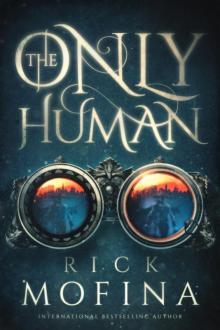 The Only Human
The Only Human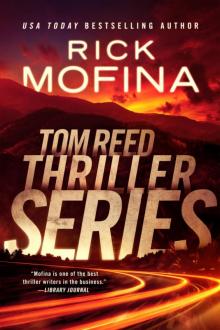 Tom Reed Thriller Series
Tom Reed Thriller Series![[Tom Reed and Walt Sydowski 04.0] No Way Back Read online](http://i1.bookreadfree.com/05/tom_reed_and_walt_sydowski_04_0_no_way_back_preview.jpg) [Tom Reed and Walt Sydowski 04.0] No Way Back
[Tom Reed and Walt Sydowski 04.0] No Way Back Missing Daughter
Missing Daughter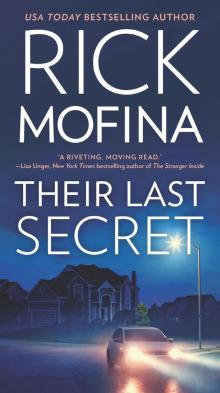 Their Last Secret
Their Last Secret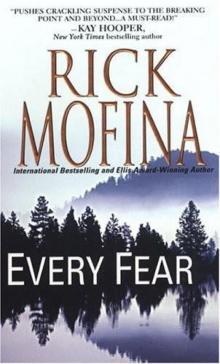 Jason Wade - 02 - Every Fear
Jason Wade - 02 - Every Fear In Desperation
In Desperation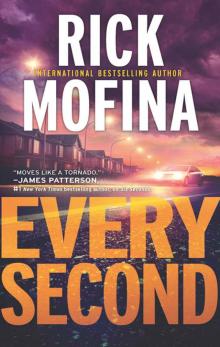 Every Second
Every Second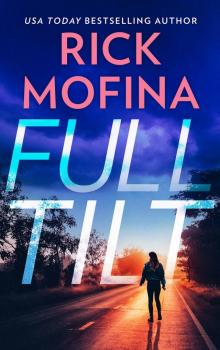 Full Tilt
Full Tilt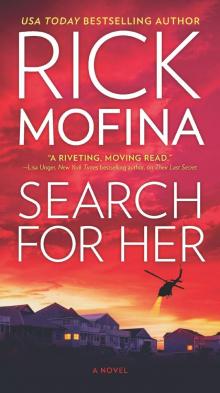 Search for Her
Search for Her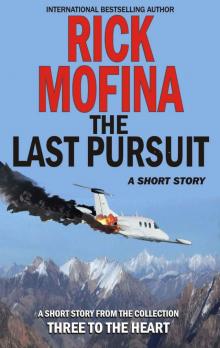 The Last Pursuit
The Last Pursuit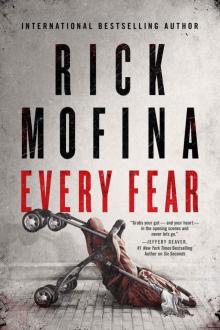 Every Fear
Every Fear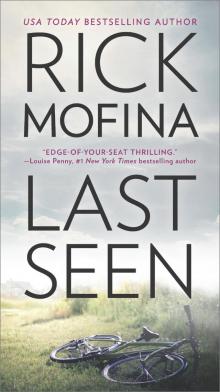 Last Seen
Last Seen The Panic Zone
The Panic Zone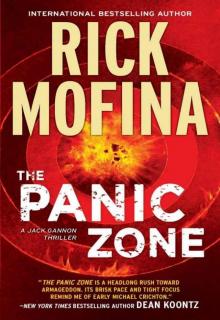 The Panic Zone jg-2
The Panic Zone jg-2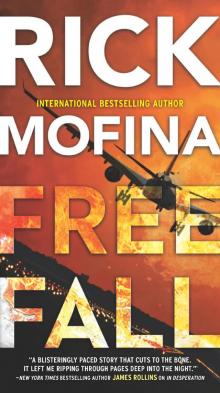 Free Fall
Free Fall Blood of Others
Blood of Others![[Jason Wade 02.0] Every Fear Read online](http://i1.bookreadfree.com/i1/03/31/jason_wade_02_0_every_fear_preview.jpg) [Jason Wade 02.0] Every Fear
[Jason Wade 02.0] Every Fear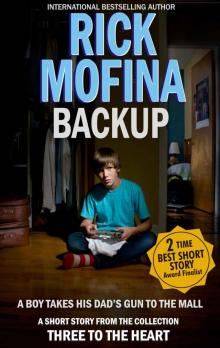 Backup
Backup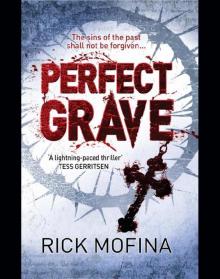 Perfect Grave
Perfect Grave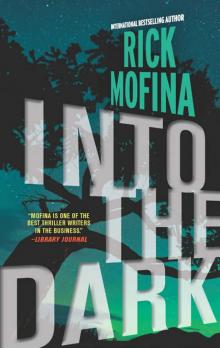 Into the Dark
Into the Dark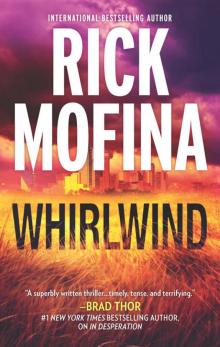 Whirlwind
Whirlwind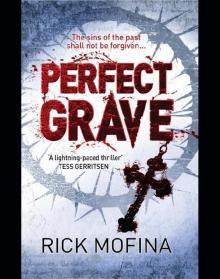 Perfect Grave jw-3
Perfect Grave jw-3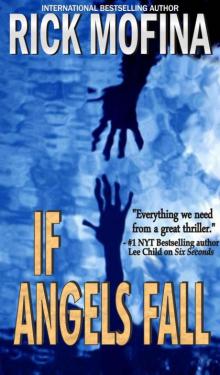 If Angels Fall (tom reed and walt sydowski)
If Angels Fall (tom reed and walt sydowski) Six Seconds
Six Seconds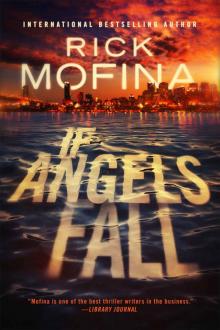 If Angels Fall
If Angels Fall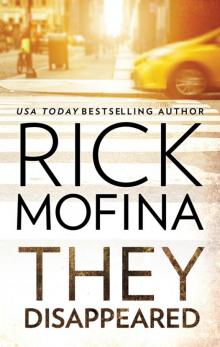 They Disappeared
They Disappeared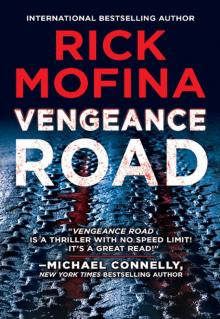 Vengeance Road
Vengeance Road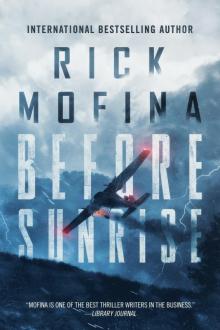 Before Sunrise
Before Sunrise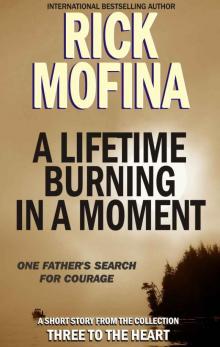 A Lifetime Burning in a Moment
A Lifetime Burning in a Moment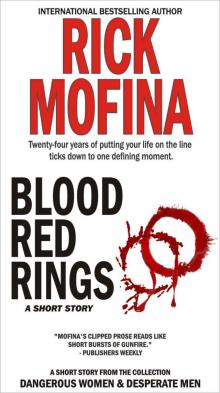 Blood Red Rings (Dangerous Women & Desperate Men)
Blood Red Rings (Dangerous Women & Desperate Men)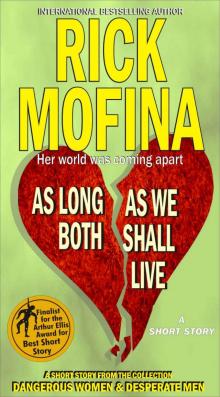 As Long As We Both Shall Live (Dangerous Women & Desperate Men)
As Long As We Both Shall Live (Dangerous Women & Desperate Men)![[Tom Reed and Walt Sydowski 01.0] If Angels Fall Read online](http://i1.bookreadfree.com/i2/04/12/tom_reed_and_walt_sydowski_01_0_if_angels_fall_preview.jpg) [Tom Reed and Walt Sydowski 01.0] If Angels Fall
[Tom Reed and Walt Sydowski 01.0] If Angels Fall Cold Fear
Cold Fear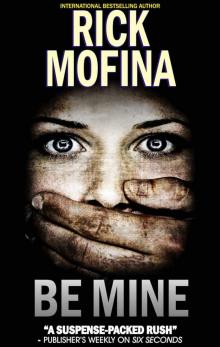 Be Mine
Be Mine Three Bullets To Queensland
Three Bullets To Queensland